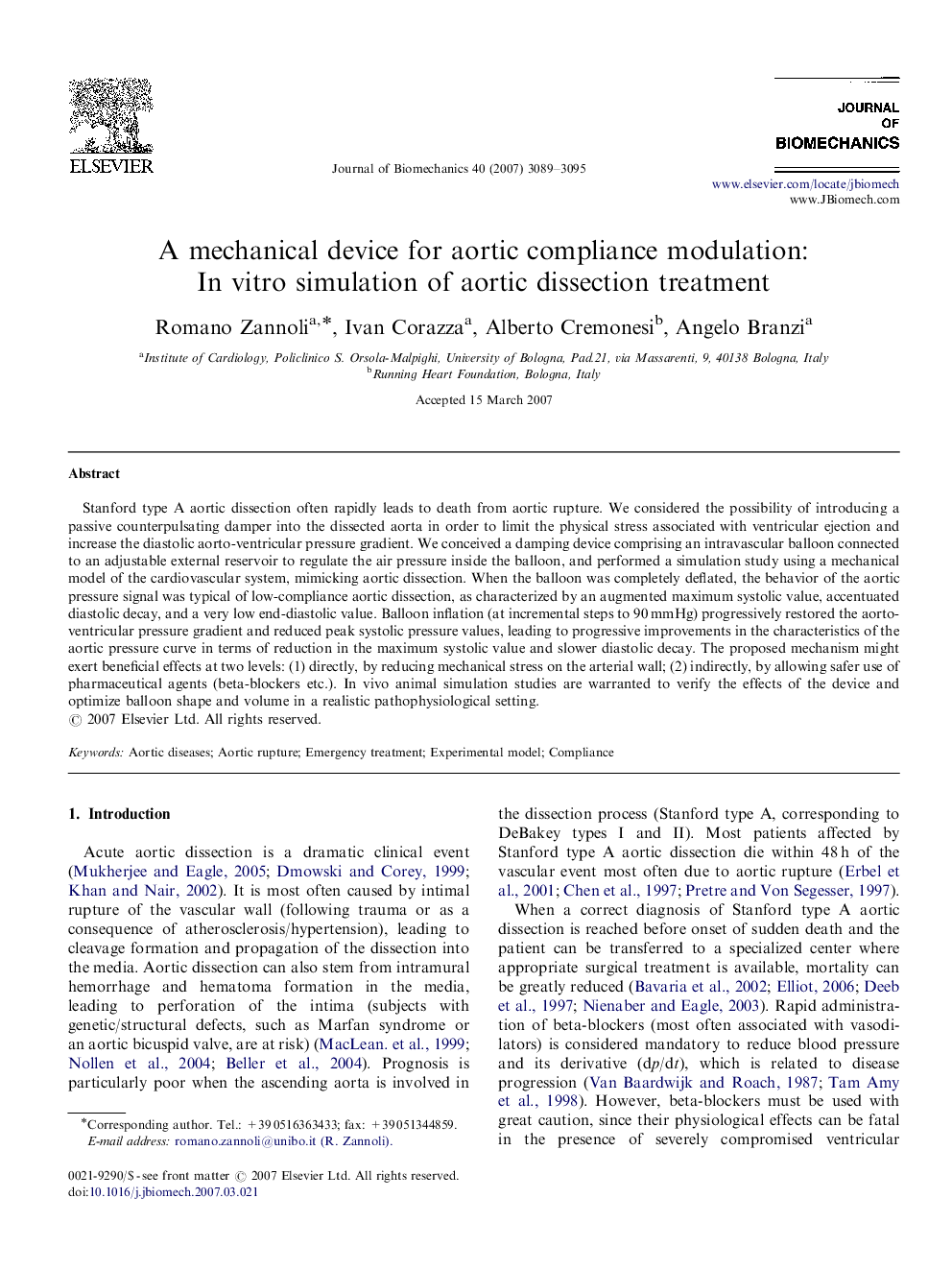| Article ID | Journal | Published Year | Pages | File Type |
|---|---|---|---|---|
| 875295 | Journal of Biomechanics | 2007 | 7 Pages |
Stanford type A aortic dissection often rapidly leads to death from aortic rupture. We considered the possibility of introducing a passive counterpulsating damper into the dissected aorta in order to limit the physical stress associated with ventricular ejection and increase the diastolic aorto-ventricular pressure gradient. We conceived a damping device comprising an intravascular balloon connected to an adjustable external reservoir to regulate the air pressure inside the balloon, and performed a simulation study using a mechanical model of the cardiovascular system, mimicking aortic dissection. When the balloon was completely deflated, the behavior of the aortic pressure signal was typical of low-compliance aortic dissection, as characterized by an augmented maximum systolic value, accentuated diastolic decay, and a very low end-diastolic value. Balloon inflation (at incremental steps to 90 mmHg) progressively restored the aorto-ventricular pressure gradient and reduced peak systolic pressure values, leading to progressive improvements in the characteristics of the aortic pressure curve in terms of reduction in the maximum systolic value and slower diastolic decay. The proposed mechanism might exert beneficial effects at two levels: (1) directly, by reducing mechanical stress on the arterial wall; (2) indirectly, by allowing safer use of pharmaceutical agents (beta-blockers etc.). In vivo animal simulation studies are warranted to verify the effects of the device and optimize balloon shape and volume in a realistic pathophysiological setting.
